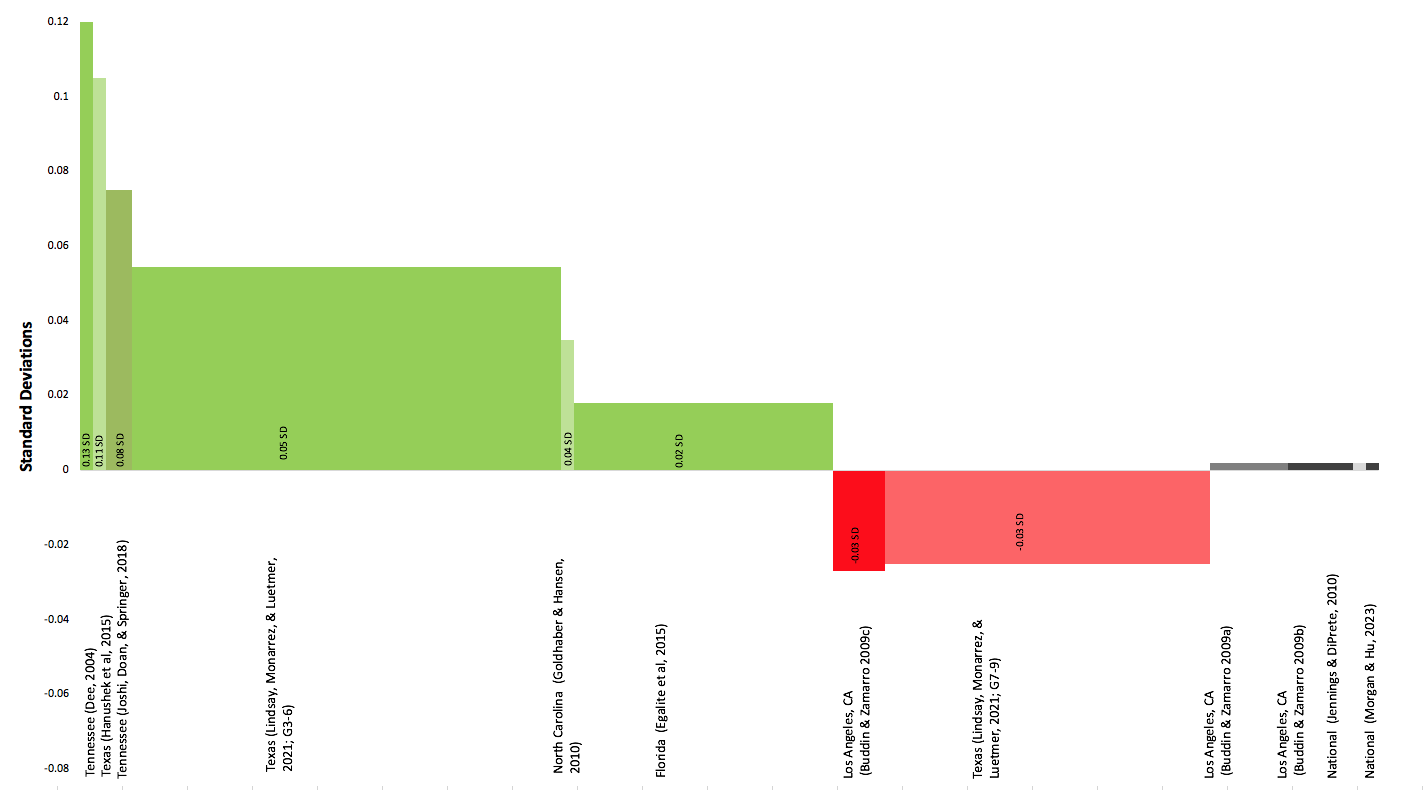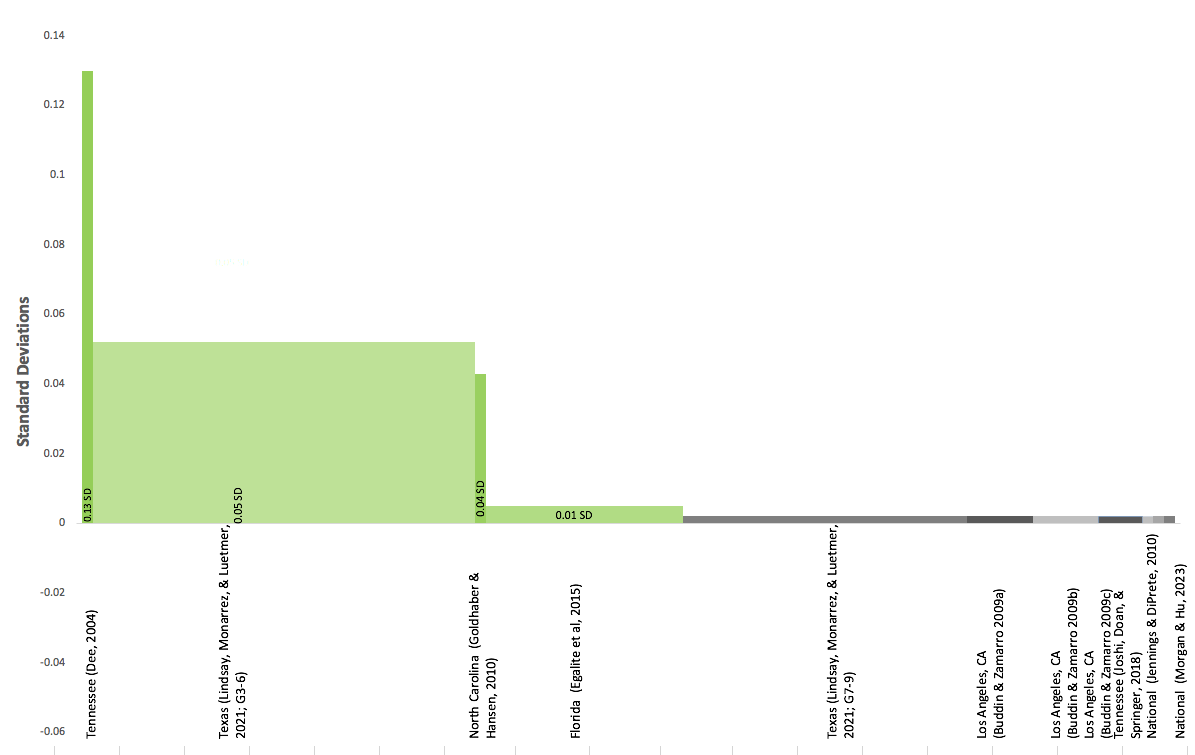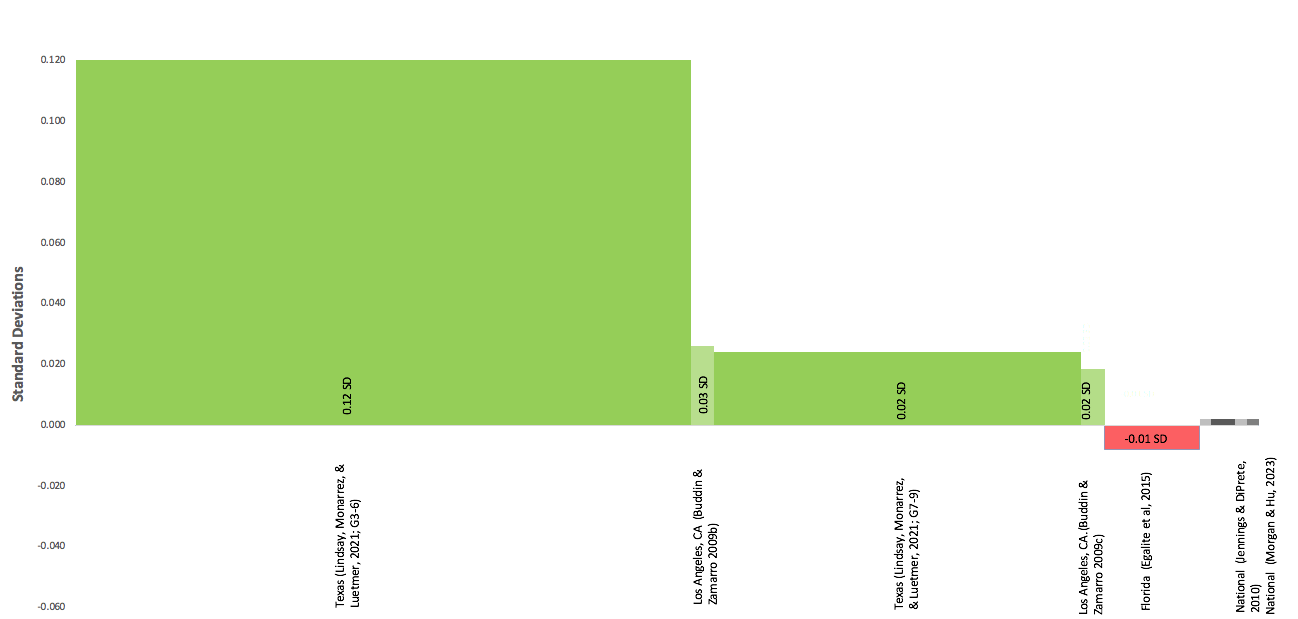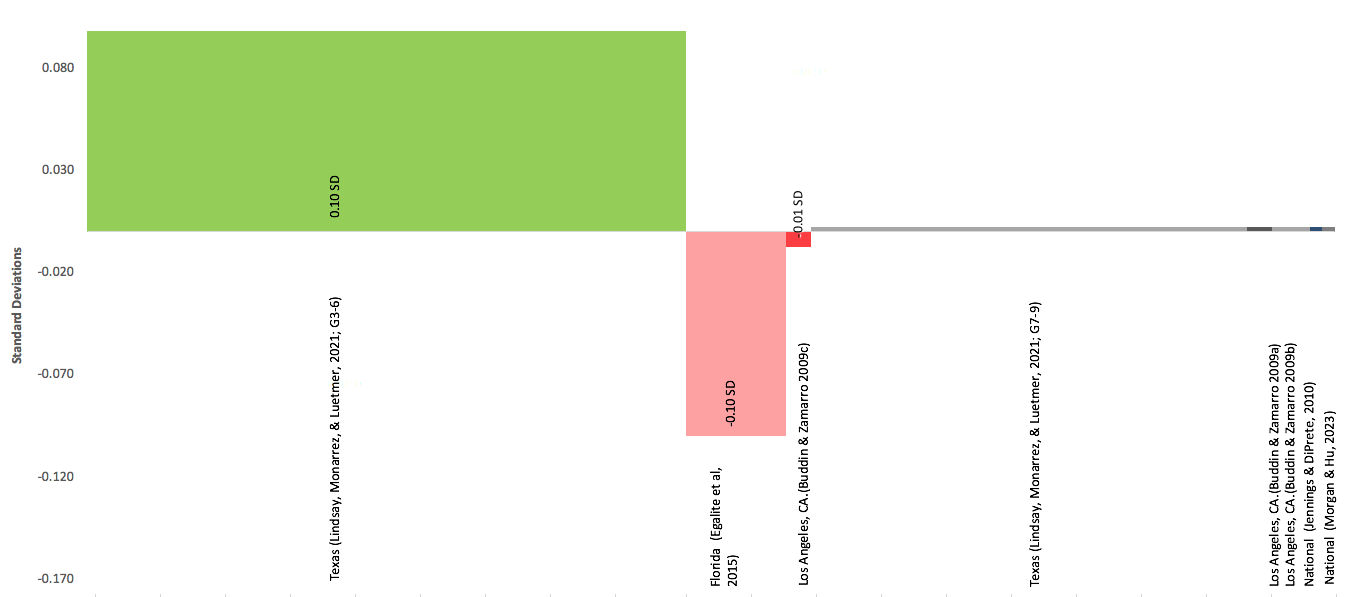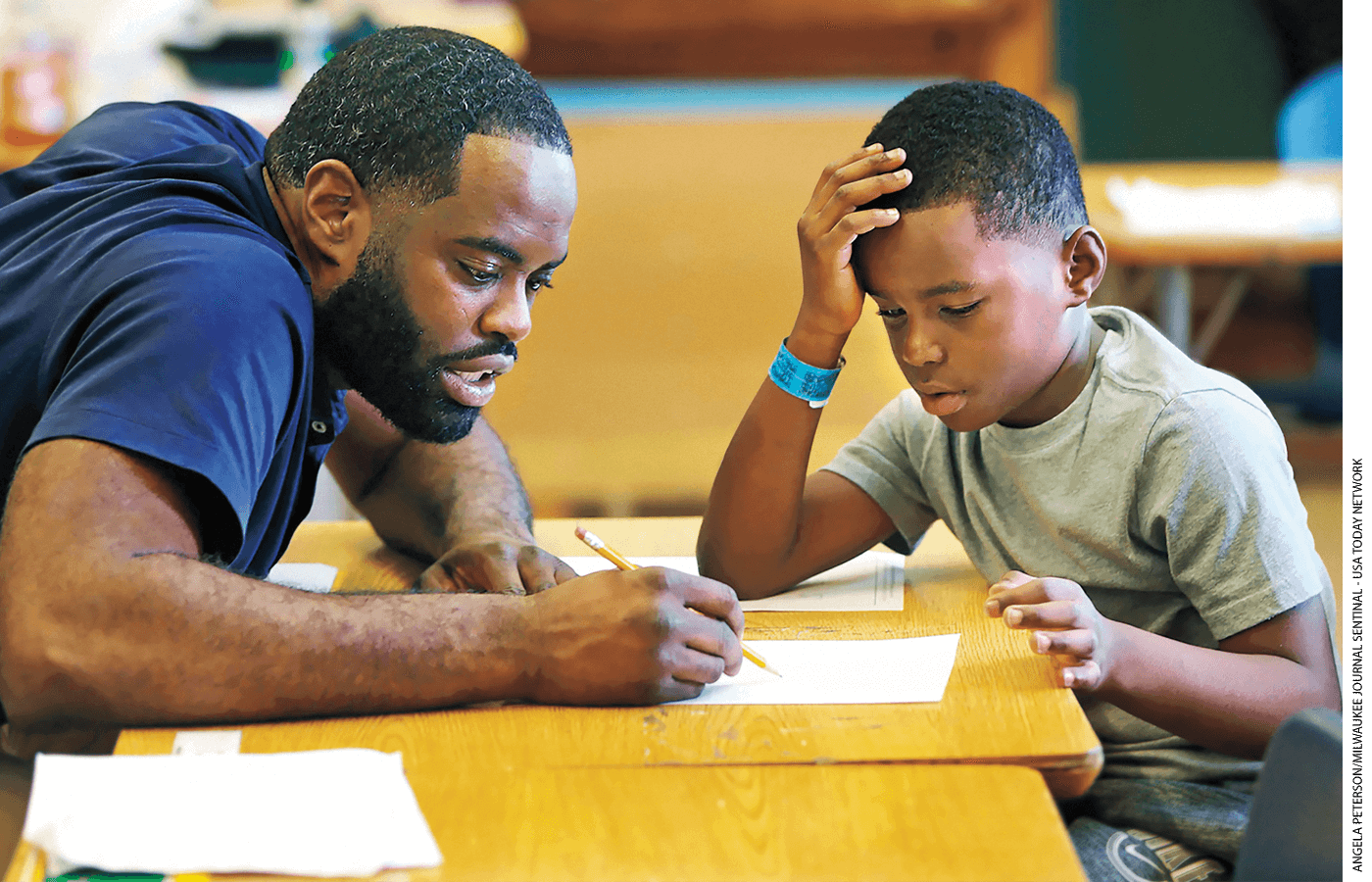
Across classrooms, schools, and communities, American students are far more diverse than their teachers. Some 79 percent of U.S. teachers are white compared to 44 percent of students. As a result, students of color are far less likely to have a same-race teacher than are white students, a phenomenon that has attracted the attention of philanthropists and policymakers alike.
Foundations have made big investments in building the Black teacher pipeline, and across the country, policymakers in states like North Carolina, California, Maryland, Massachusetts, and New York have launched initiatives to recruit and retain more diverse public-school teachers. The issue of underrepresentation in credentialed professions like teaching was referenced by the Biden White House in the 2023 Economic Report of the President, and the U.S. Department of Education recently awarded $18 million in grants to support and expand teacher-training programs at Historically Black Colleges and Universities, which prepare half of the nation’s Black teachers.
These efforts are rooted in the widely accepted idea that students of color benefit academically when they are taught by a same-race teacher, known variously as race-matching, racial pairing, same-race assignment, ethnoracial matching, and racial congruence. The evidence base supporting initiatives to diversify the teacher workforce stems from a 2004 study of elementary-school students in Tennessee (see “The Race Connection,” research, Spring 2004). It found that when students were randomly assigned to classrooms led by a same-race teacher, their math and reading achievement improved by 3 to 4 percentile points. In the years since, a significant body of research has accumulated on the effects of race-matching, particularly for Black students.
But some policy pundits are quietly raising questions about race-matching, including asking if the evidence has been over-hyped and oversold. Just how rigorous is the research purporting to show student-teacher race-match benefits? Do the benefits hold up in studies across multiple locations and with different student populations? How urgently should school and system leaders actively prioritize attracting a more diverse pool of teacher candidates?
I decided to take stock of the literature and findings to date. While a helpful meta-analysis and synthesis of this literature already exist, they are behind paywalls at academic journals and only describe studies that came out before 2019. The prominence of race-matching in policy conversations and the pace at which new research is being published necessitates an update for 2023.
A Review of Race-Matching Research
I begin by reviewing 12 studies weighing the claim that teacher race-matching boosts students’ academic outcomes. These were published between 2004 and 2023 and are based on state data sets from Tennessee, Texas, North Carolina, and Florida; results from several large school districts, including Los Angeles Unified; and federal longitudinal data collected by the National Center for Education Statistics. I only consider studies that use a standardized measure of student achievement and exclude studies that do not disaggregate findings by student race/ethnicity or do not report standardized effect sizes or the information required to calculate them.
Not every study reaches the same conclusion, but this doesn’t necessarily mean the research is “mixed” or “inconclusive.” Rather, these varied results may be a function of differences among the studies themselves, such as their research design and the context in which they were conducted, as well as whether their data fully reflect the experiences of students and teachers in the classroom.
Consider how data is collected and coded. Research to date has used the broad racial classifications found in standard administrative datasets to code students and teachers a “match.” A Cuban teacher and Mexican student may be considered matched if they both report Hispanic ethnicity, despite not sharing identity markers like nationality, first language, country of birth, or cultural traditions. More sophisticated measurement methods are currently being proposed and tested that will allow for more fine-grained and sophisticated “matches” in future studies, but these are not part of the literature so far.
Consider as well how the relatively smaller numbers of non-white teachers affect the frequency and likelihood of white and non-white students having a same-race teacher. Some 79 of all K–12 teachers are white, about 9 percent are Hispanic, and 7 percent are Black, federal data show. For most white students, having a same-race teacher is not a novel experience. Instead, it is the continuation of having yet another same-race teacher in a sequence of mostly or all same-race teachers. By contrast, many students of color may only have a same-race teacher once, if at all. Among U.S. 5th graders in 2015–16, 55 percent of Black and Hispanic students had never had a same-race teacher in elementary school, federal data show, while 55 percent of white students had had a same-race teacher five or six times.
Estimates of race-match effects for white students are therefore likely influenced by the phenomenon of “diminishing marginal utility.” Economists often compare this to drinking a refreshing cold glass of lemonade on a hot day: the second, third, and fourth glasses just don’t offer the same satisfaction as the first! This insight might help explain why we see a clearer pattern of positive and significant effects for Black students than for white students. Thus, we should bear in mind that studies reporting a null overall match effect may be dominated by the experiences of white students. Readers might find more useful data in studies that separately report findings for students of other races and ethnicities.
Insights and Caveats
The 2004 experimental analysis based on randomized class assignments in Tennessee elementary schools, conducted by Stanford University economist Thomas Dee, remains the strongest evidence on this topic. Dee focuses on students in kindergarten through third grade and compares the academic performance of students with a same-race teacher to that of students whose teacher is of a different race. He reports race-matching benefits in math and reading of 13 percent of a standard deviation, or between 2 and 4 percentile points, for both Black and white students. These causal effects are larger than any of the estimates from studies using non-experimental designs. However, Dee’s study involves a relatively disadvantaged student population in a southern state in the 1980s, which limits its contemporary relevance.
Luckily, a more recent study by David Blazar also employs an experimental approach to study how race-matching affects student outcomes. His 2021 analysis looks at test scores as well as behavior and indicators of social-emotional development for 1,283 students in 4th and 5th grade in four U.S. districts on the East Coast. He finds even larger effects on test scores of about 20 percent of a standard deviation when students are taught by same-race teachers. Blazar also follows these students for up to six years, finding that the positive test score impacts he observes in elementary school persist when the students attend high school.
Other studies use a range of quasi-experimental approaches and focus variously on metro-area, statewide, or federal datasets. Although nationally representative surveys conducted by the federal government are appealing in terms of representation, state administrative datasets offer two notable benefits. First, the sheer volume of data confers a major advantage in sample size. Second, the diversity of contexts offered by statewide studies allows researchers to test if findings about the teacher race-match phenomenon are consistent across multiple locations.
For example, researchers Paul Morgan and Eric Hengyu Hu analyzed longitudinal federal education data in a 2023 study and issued the broad declaration that “U.S. elementary school students do not particularly benefit from being taught by teachers of the same race or ethnicity.” But one cannot conclude that from a single study.
Their test-score analysis compares students to themselves over time to see if teacher race-match predicts achievement changes. This is a well-executed study, using an analytic approach that is commonly used in state-level studies, but it has some limitations, including significant missing data and an inability to control for differences in teacher quality between those students experiencing and not experiencing teacher matches.
Effects on Student Outcomes
To make sense of this wide-ranging literature, I look at findings for Black and/or Hispanic students across multiple dimensions (see Figure 1).
Figure 1: Effects of Race-Matching on Student Test Scores
A plurality of rigorous studies of race-matching, including many of the studies with the largest samples, find positive and statistically significant effects on test scores for both Black and Hispanic Students.
Figure 1a: Math scores, Black students
Figure 1b: Reading scores, Black students
Figure 1c: Math scores, Hispanic students
Figure 1d: Reading scores, Hispanic students
Note: The width of each bar is proportional to the number of students included in the relevant study. Studies that report statistically insignificant results are shaded gray.
Source: Author’s calculations.
Test Scores: I first look at the 12 studies that are based on standardized test scores in math or English Language Arts, disaggregate findings by student race or ethnicity, and report standardized effect sizes. These all employ either an experimental or quasi-experimental research design, both of which allow researchers to estimate causal impacts.
Half of these studies find positive and statistically significant effects for Black students in math. Research from Tennessee, Texas, North Carolina, and Florida shows that Black students have higher math scores in years when they are assigned to a Black teacher, with effect sizes ranging from 2 percent to 13 percent of a standard deviation. The positive effects in math are more pronounced among Black elementary-school students. We have less evidence of race-match effects for Black high-school students, and two samples of high-school students show slightly negative effects. In reading, Black students also appear to benefit from Black teachers, with effect sizes ranging from 1 percent to 13 percent of a standard deviation. There are no studies showing negative match effects in reading for Black students of any age.
Nine studies meet the inclusion criteria for Hispanic students in math. Of these, four report positive and statistically significant effects on test scores, ranging from 2 percent to 12 percent of a standard deviation, while one study from Florida finds a negative effect of 1 percent of a standard deviation in math. In reading, most studies report null effects for Hispanic students. A single study in Texas reports a positive effect of 10 percent of a standard deviation, while studies of students in Florida and Los Angeles report negative effects of 10 percent and 1 percent of a standard deviation, respectively.

Beyond Test Scores: Looking beyond these 12 studies, researchers also have examined teacher match effects on a wide range of non-test score outcomes, including student contentment in school, suspensions, absenteeism, enrollment in advanced courses, gifted and talented assignment, high school graduation, and college enrollment (see Figure 2). Studies across a broad range of locations report a range of statistically and substantively significant findings, including by student subgroups. For example, in 2017 Brian Kisida and I looked at data from six school districts across the country and found that students assigned to a same-race teacher are happier in class, more likely to report feeling cared for by their teacher, and more likely to consider going to college.
Figure 2: Effects of Race-Matching on Non-Test-Score Outcomes
Many studies of race-matching find positive benefits for minority students across a range of non-test-scores outcomes, including reductions in absenteeism and disciplinary incidents and gains in educational attainment, though a substantial share of studies report null effects.
Source: Author's calculations
A 2017 study by Stephen B. Holt and Seth Gershenson found that elementary-school students in North Carolina were 15 percent more likely to experience a school suspension if assigned to an other-race teacher. This effect was especially large when looking at data for non-white boys, who were twice as likely to be suspended if assigned to a white teacher.
Gershenson also co-authored two other studies based on the same randomized class assignment data from Tennessee that Dee used in his 2004 analysis. In 2021, Long Tran and Gershenson found that Black students with Black teachers are 26 percent less likely to be chronically absent, based on a difference of 3.1 percentage points. A 2022 study authored by Gershenson and Cassandra M.D. Hart, Joshua Hyman, Constance A. Lindsay, and Nicholas W. Papageorge found that Black students who are taught by a Black teacher in the early elementary grades are 9 percentage points more likely to graduate from high school and 6 percentage points more likely to enroll in college. The authors also looked at North Carolina data from 2001–2014 and replicated the Tennessee findings. The effects on graduation are larger than the modest test score gains would lead one to expect, indicating that changes in a standardized test scores may not capture the full benefits of race-matching for students of color.
Jeffrey Penney has also analyzed Tennessee data. In a 2023 analysis, he found that students with below-average academic performance experience the largest boost when assigned to a race-matched teacher. In a 2017 study, Penney found that exposure to a same-race teacher is more beneficial if it occurs earlier in a student’s education.
Additional Considerations
What about the less-likely circumstance where a Black student has multiple Black teachers? These results don’t show compounding effects; rather, it appears that having just one Black teacher as opposed to none is what’s driving the observed impacts on academic and non-academic outcomes. Providing Black students with a race-matched teacher at some point during elementary school may not require a dramatic increase of teacher candidates of color in the immediate term. Currently, some 45 percent of Black elementary-school students in the U.S. are never taught by a Black teacher between kindergarten and fifth grade. The main task is to change that number from zero to one, which means that policymakers need to pay attention to the distribution of teachers of color, not just their overall numbers.
The central importance of teachers’ effectiveness cannot be overstated. Studies from Tennessee, Florida, and others explicitly control for a measure of teacher effectiveness (measured in the prior years) so that any race-match effect can be isolated from generic teacher quality. Even studies that don’t appear to account outright for teacher quality in their empirical model are analyzing censored samples in which all participants have met a minimum performance bar. That is, almost all studies on this topic are focused on teachers that have already been hired by traditional public schools and would be required to meet their state’s certification or licensure standards. A policy responding to this evidence that scaled up teacher hiring without regard to some measure of effectiveness or quality would not be well advised. Instead, policymakers must do the hard work of getting effective Black and Hispanic teachers into classrooms.
Finally, of particular note is the suggestive evidence that race-match effects appear to be larger in charter schools than traditional public schools. This could be a function of the student population, the context in which they operate, the governance distinction, or any of these factors in combination.
However, it may also be a function of the leadership and instructional cultures of some charter schools. Almost 30 years since the establishment of the first charter school, an accumulation of rigorous research points toward specific practices associated with their outsized gains in student learning, particularly in urban centers. One overlooked dimension of this literature is the role of teacher-student race-matching, which is arguably related to the greater flexibility charter schools have when hiring teachers. Not only do Black students benefit more from having a Black teacher if they attend a charter school relative to their Black peers in traditional public schools, but Black students attending charter schools also are significantly more likely to experience having a Black teacher. Reasons might include differences in school culture, curriculum, teacher training, and charter school leadership styles. A better understanding of these differences and race-matching impacts may positively inform traditional teacher training programs and professional development at traditional public schools.
What Drives the Diversity Boost
Several theories have been proposed to explain the race-match phenomenon. These generally fall into two categories: (1) potential race-match benefits are due to changes in the student’s disposition, attitude, outlook, and behavior; or (2) potential race-match benefits are due to differences in the teacher and how they interact with and design learning experiences for students.
Student-focused theories include stereotype threat, which is the idea that a student’s individual performance is influenced not just by their intelligence and motivation but by the way their group is perceived by the larger culture. It’s a phenomenon that has been studied and replicated in more than 300 laboratory experiments. Another theory is that of role modeling, which suggests students of color may feel more motivated and work harder to impress the trusted adult leading their classroom if that person reflects their racial and cultural identity.
Teacher-focused theories, on the other hand, point toward the potential for a shared cultural understanding with students, the possibility the teacher will serve as a “warm demander” of their students and that they will use more effective, engaging, and culturally-affirming pedagogical strategies.
When designing learning experiences for their students, teachers who share common values, traditions, and communication styles could more readily design engaging lessons that are aligned with students’ community identities and home lives and help them feel a stronger sense of belonging at school. While culturally relevant pedagogy can be a fuzzy concept to nail down, there have been several recent, high-quality studies with encouraging findings.
For example, a causal study of the African American Achievement Program for high-school boys in Oakland, California, found significant reductions in drop-out rates. Another analysis looking at a 9th-grade ethnic-studies curriculum in San Francisco found it increased student attendance by 21 percentage points, grade-point average by 1.4 points, and credits earned by 23. A follow-up analysis showed longer-run positive impacts, including increases in high-school graduation and college enrollment.
We also might expect that increasing teacher diversity could reduce the possibility of discrimination in student discipline. In a 2019 study, for example, researchers look at disciplinary records in New Orleans to compare punishments among Black and white students who are involved in the same incident. They find evidence, although modest in effect size, that Black students consistently receive harsher punishments than white students. This amounts to Black students being 1 to 2 percentage points more likely to receive a longer suspension compared to their white peers for similar behavior.
We also have evidence that white teachers tend to have lower academic expectations for students of color. In early elementary school, teachers rate their perceptions of students’ academic skills in English and math significantly lower if they don’t share a racial match. Black students are referred to gifted and talented programs at lower rates than otherwise similar non-Black students and also are substantially less likely to be referred when taught by non-Black teachers. Research also finds that white teachers have more negative perceptions of Black students. A study looking at classroom dynamics found that Black and Hispanic students are 1.5 times more likely to be described as “frequently disruptive” and 1.7 times more likely to be characterized as “consistently inattentive” by white teachers compared to school years when they were assigned to a teacher who shared their racial or ethnic characteristics. At the high-school level, teachers generally expect 58 percent of their white students to go on to college compared to 37 percent of Black students (see “The Power of Teacher Expectations,” research, Winter 2018).
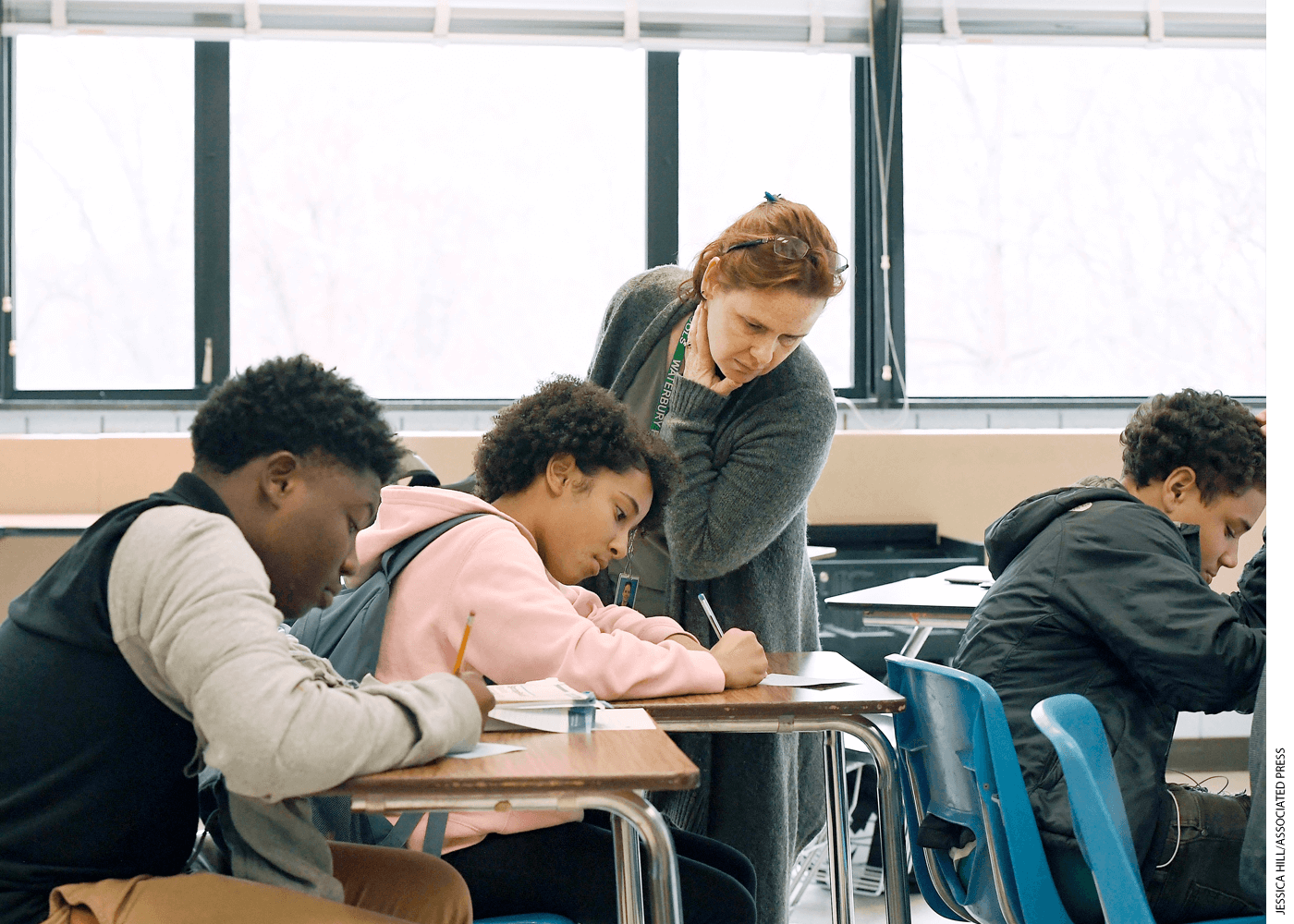
In a broader sense, having more diverse teachers on staff might act as a check against majority-race teachers in a school making assumptions about students who find themselves in the minority. This dynamic could influence overall teacher behavior, increase student-faculty understanding, and challenge expectations across the school. Teachers of color might also better understand how to develop strong relationships and communication channels with parents and caregivers of students of color. Most likely, there is a combination of phenomena at work, and it is probably the interplay between them that explains why representation appears to matter to the degree that we’ve seen.
Closing the Representation Gap
Despite much talk, countless initiatives, and a growing body of credible research over the past 20 years, efforts to close the representation gap largely haven’t worked. Policymakers with an interest in this issue will have to think more creatively about which approaches are likely to shift the composition of the educator workforce meaningfully. Recent research and survey data offer some clues about strategies to pursue.
The primary and underlying challenge is the legacy of past inequalities in educational opportunity. In 2016, some 14 percent of American undergraduate students were Black, compared to 19 percent Hispanic and 56 percent white. While the rates of graduates pursuing teaching are similar—between 9 and 11 percent for all races—the overall number of graduates of color with an education degree is small. In a 2022 nationwide survey of teachers and school leaders, for example, teachers of color reported that lowering the costs of becoming a teacher and building inclusive school cultures would encourage more candidates of color to become teachers. But, on the whole, reforms aimed at attracting more college graduates into teaching are coming too late in the pipeline. Broadening educational opportunity for young students of color is the most surefire way to diversify future teachers.
To take action now, policymakers and districts can focus on principals, who make hiring decisions and shape school cultures that can retain or repel diverse teachers. About half of all principals responding to the 2022 survey reported needing more time during their training to learn how to recruit and retain diverse teachers and build a positive school climate. Districts and state education leaders can provide training to school leaders already on the job. They also can intentionally recruit and hire more non-white principals, who currently account for 22 percent of all school leaders. Evidence from Tennessee and Missouri finds that non-white principals increase the proportion of same-race teachers in their school by between 1.9 and 2.3 percentage points.
Leaders also can address the race-based teacher retention gap. Non-white teachers, and particularly Black teachers, are more likely to move schools or leave the profession than their white colleagues, federal data show. Nationwide, 85 percent of white teachers stayed in their jobs between 2011–12 and 2012–13, compared to 78 percent of Black teachers and 79 percent of Hispanic teachers. Meanwhile, 10 percent of Black teachers left the profession altogether compared to 8 percent of white and Hispanic teachers, respectively. Policymakers and district and school leaders need to understand and address the contributing factors; for example, benefits like loan forgiveness and managerial priorities that build inclusive professional communities both could boost retention.
In looking at effectiveness with non-white students, new research indicates that teachers of any race who are trained at Historically Black Colleges and Universities are especially successful with Black students. This is especially the case with Black males. While these programs prepare half of all teachers of color in the United States, they account for a relatively small share of teachers overall. Researchers, teacher trainers, state and district education leaders, and advocates should study these programs to learn how their pedagogy, culture, and learning experiences prepare teachers to work with students of color.
While diversifying the teacher workforce is a worthy and urgent goal, growing the expertise and ability of the teachers already working in the classroom, guiding them to engage thoughtfully with students of color, and encouraging them to improve those students’ learning outcomes effectively are immediate imperatives. From a practical perspective, leading training programs and effective charter schools would seem ready sources of insight. From a research perspective, evaluating the practices of educators who effectively improve student outcomes, as well as looking at intentional educator-student matching through initiatives such as My Brother’s Keeper, can provide essential insights.
Anna Egalite is an associate professor at North Carolina State University, a visiting fellow at the Hoover Institution at Stanford University, and an editor at Education Next.
This article appeared in the Winter 2024 issue of Education Next. Suggested citation format:
Egalite, A. (2024). What We Know About Teacher Race and Student Outcomes: A review of the evidence to date. Education Next, 24(1), 42-49.


